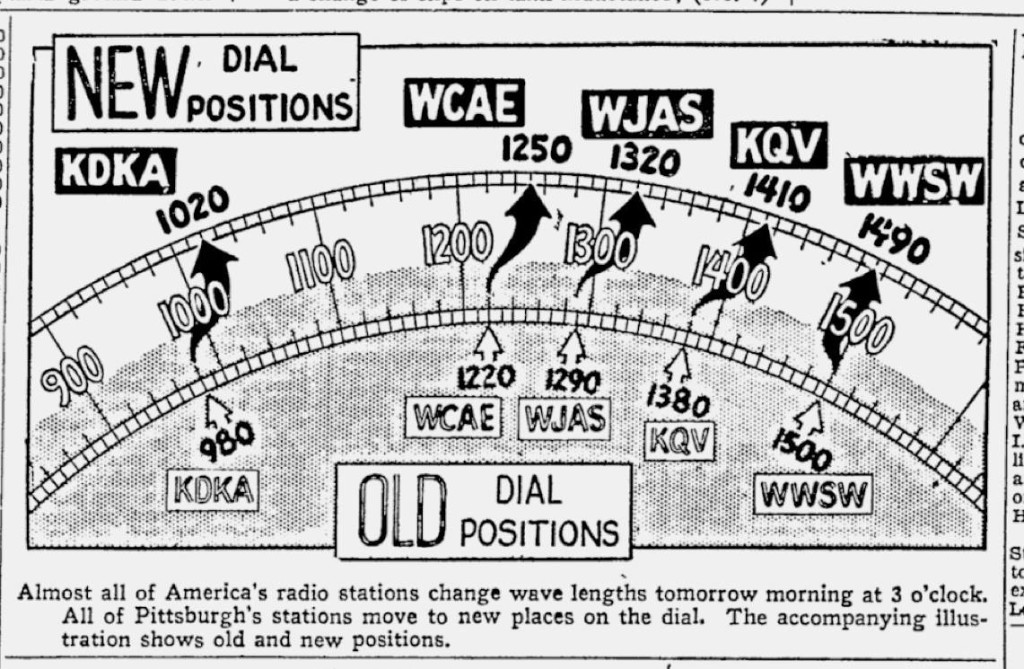NARBA Frequency Change – 75 years later
March 29, 2016Our friend Scott Fybush points out that today is the 75th anniversary of the North American Radio Broadcasting Agreement and the great frequency change for AM radio across the country. Just about every station moved from one frequency to another. Here is an ad in the March 28, 1941 Pittsburgh Press noting the change courtesy of Jason Togyer.

WWSW was the only one not to change to its current (as WBGG) position at 970. That move didn’t happen until November 1949 requiring 8 towers in Ross Township.
The plan was to set aside Canadian and Mexican clear channel frequencies at a rate of about 1 per 100 kHz. The band also expanded the dial ending at 1500 to a dial ending at 1600 kHz. The treaty is no longer in force and now if you Google NARBA, you get the North American Rare Bird Alert or The North American Raspberry Blackberry Association.


Nice graphic! That wouldn’t have been a hard change at all, within a week or two it would be business as usual. I’ve heard about this over the years but hadn’t seen how it actually happened and where local stations ended up. I can see WWSW getting off of 1490, a local class 250 watt frequency, but egad, 8 towers!
I see that stations wanted to be in the mid-high portion of the band, probably a good choice around Pittsburgh, city, a little less noise higher up, frequencies seem to get into buildings better downtown and past power lines.
My restructuring scheme would have been to space radio stations at 20 khz. instead of 10 khz., in any given part of the country, so that you wouldn’t have a station closer than 20 khz. to yours within, for example, 1500 miles. That would have helped to lower interference from splatter and 10 kc beat tones, and helped to keep AM a higher fidelity service, and we shouldn’t have needed NRSC bandwidth restrictions that are in place now.
If you click my name on this post, it should take you to a post I wrote about the Pittsburgh radio dial as it was in 1927, thanks to a book called Who’s Who in Radio, which you can also read there by PDF.
Boomer